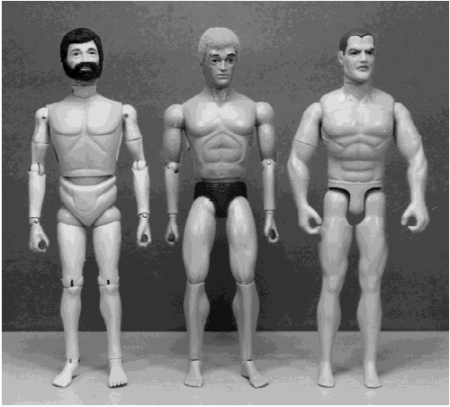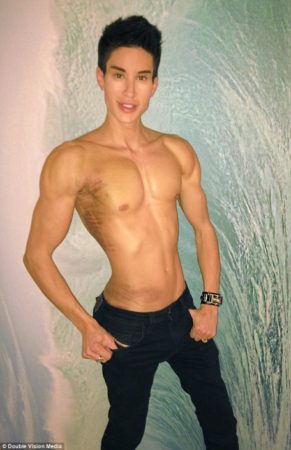Source: Gym Buzz
Body image issues in males are often a silent subject when women are so readily criticized in the media. However, reported cases in Australia continue to rise as the ideal vision of masculinity is continually chased by the male community. It has been reported that one in 10 men at the gym are not seeing their true selves when they look in the mirror (BBC UK, 2015), leading to depression, anxiety, steroid abuse and even suicide. This is known as Body Dysmorphic Disorder (BDD), “bigorexia” or “reverse anorexia”.
The DSM-V criteria list BDD as:
- Preoccupation with an imagined defect of appearance. If a slight physical anomaly is present, the person’s concern is markedly excessive
- The preoccupation causes clinically significant distress or impairment in social, occupational, or other important areas of functioning
- The preoccupation is not better accounted for by another mental disorder (e.g. dissatisfaction with body shape and size in anorexia nervosa)
Most commonly this is seen in physique, but BDD does not always involved muscle mass. Men have been found to become preoccupied with their facial features, hair (in particular, baldness), genitals, skin and height. Approximately 1% of the community suffer from BDD (Thompson & Durrani, 2007). With the preoccupation comes determination, often resulting in reduced social interactions and loss of friends. It is reported that approximately 80% of males suffering from BDD have experienced suicidal ideation and around one in four with BDD have attempted suicide (Phillips, Coles, Menard, Yen, Fay & Weisberg, 2005).
There are many contributing factors to BDD in males. These include low self-esteem, negative self-talk abuse, and stress and coping mechanisms (Reach Out, 2016). One area in particular that is worth emphasizing is marketing and the ideals of the male form.
From a young age, boys are exposed to the ideals of the male physique. A study carried out by Pope et. al. (1998) observed the muscular composition of popular male dolls (in particular, G.I. Joe) manufactured over a 30 year period. It was found that as production years continued, G.I. Joe increased in both muscle mass and definition. These results coincided with the growing ideals of male body image over the decades and contributed to body image pressures in the male community.
The evolution of G.I Joe.
Source: Pope et. al (1998)
And the expectations don’t stop there – as boys grow older, they transition from their toys to looking up to celebrities. The 1980’s masculinity symbols (think of the Burt Reynolds and Tom Selleck’s of the world) were represented through body hair, full moustaches and athletic bodies. Fighting crime involved running and sliding over the bonnet of a Ferrari. Nowadays, bulky muscles and hair free chests are what men thrive for, with Men’s Health magazines donning celebs on their covers such as Dwayne “The Rock” Johnson, Chris Hemsworth and Mark Wahlberg.
The symbol of musculinity then and now
One popular culture reference of BDD is Justin Jedlica, also known as “The Human Ken Doll”. You may have seen him on shows such as Oprah, My Strange Addiction and Botched. With a background in art, he has taken his plastic surgery to another level, sculpting and sourcing manufacturers to create silicon implants for him to get the “perfect” male physique. Whilst he looks like a lean and muscular man, Jedlica notes that his body is courtesy of 190 plastic surgery procedures, and not a day in the gym. In 2015, he underwent his most dangerous procedure and had a vein removed from his forehead, which doctor’s warned could result in him going blind. His reasoning for this procedure was purely for vanity.
Justin Jedlica wants to be 100% plastic.
Source: Daily Mail
This shows that men are feeling just as much pressure as women when it comes to appearances, and with the age old definition of what a man should represent – strength, security and muscular appearance – men are suffering in silence as they neglect to find resources to teach them what is healthy in diet and exercise.
BodyMatters offers services to both men and women suffering from body dysmorphia and body image concerns through counselling and treatment. You can also find support services through Beyond Blue on 1300 22 4636.
Resources:
Phillips, K. A., Coles, M. E., Menard, W., Yen, S., Fay, C., & Weisberg, R. B. (2005). Suicidal ideation and suicide attempts in body dysmorphic disorder. The journal of clinical psychiatry, 66(6), 717-725.
Pope, H. G., Olivardia, R., Gruber, A., & Borowiecki, J. (1999). Evolving ideals of male body image as seen through action toys. International Journal of Eating Disorders, 26(1), 65-72.
Thompson, C. M., & Durrani, A. J. (2007). An increasing need for early detection of body dysmorphic disorder by all specialties. Journal of the Royal Society of Medicine, 100(2), 61–62.




